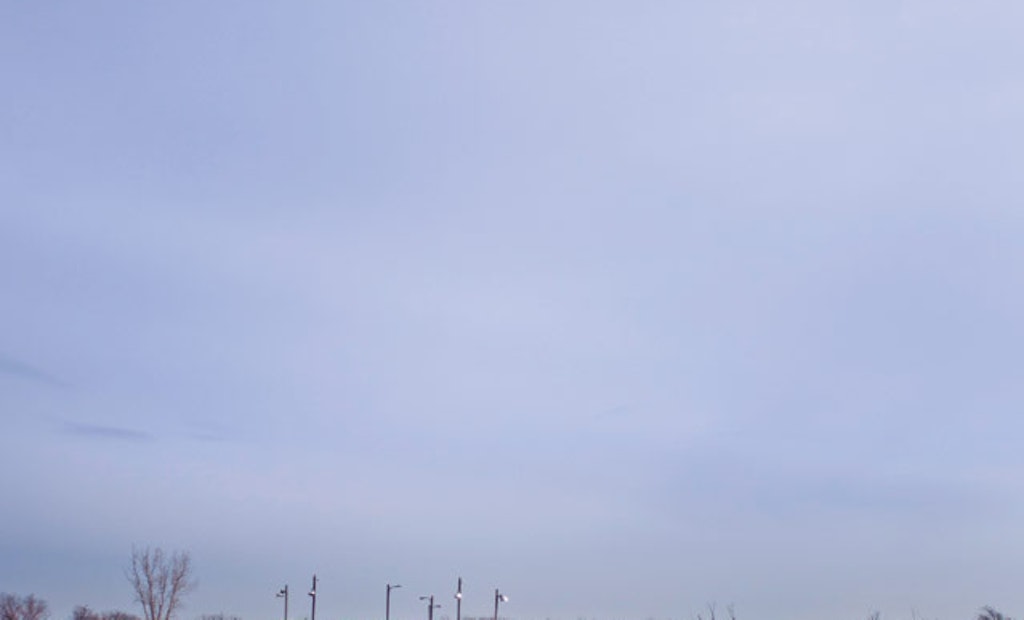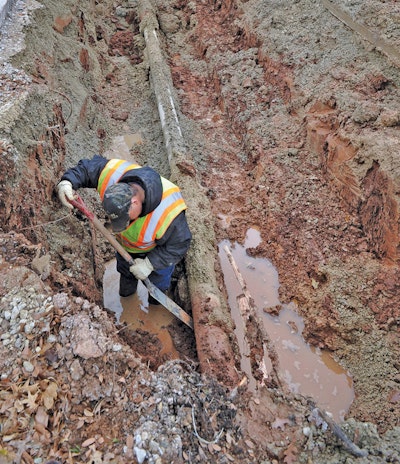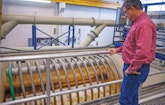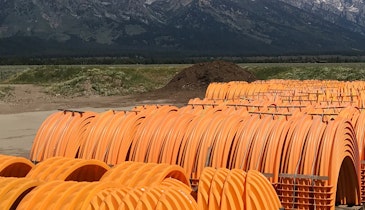
Wichita Falls, in north central Texas, is just 10 miles from the Oklahoma border. The 1930s Dust Bowl included that area, and Dust Bowl II could be on the horizon – the average rainfall has been under half the normal amount since 2011. Farming, tilling and irrigation practices have improved in the last 80 years, but this current drought has been deep and long.
“It could be another Dust Bowl,” notes Daniel Nix, utilities operations manager for the City of Wichita Falls. “We normally get 29 inches of rain per year, but since 2011 we’ve been getting way less than that. Our lake capacity is currently at 27.5 percent, and that level continues to drop.”
Most of the city’s potable water is drawn from nearby lakes, primarily Arrowhead and Kickapoo. Two other lakes, Kemp and Diversion, are naturally salty, with 10 percent the salinity of seawater. Reverse osmosis (RO) makes some of this water available, but at a necessarily higher cost.
The city’s Drought Contingency Plan has been their main weapon for combating this prolonged drought. It’s an aggressive four-stage system that addresses where, when and how water can be used. And Wichita Falls has been at Stage 4, the highest and most severe level, since November 2013.
Worth noting is that the 50 percent reduction in water use achieved by the city occurred while they were still in alert Stage 3. “That was in 2013, during June, July and August, our highest demand months,” says Nix. “Much of that was from irrigation restrictions. We don’t have data yet for Stage 4, but I’ll be interested to see how the total ban on irrigation impacts the numbers.”
How dry is it?
“When the current drought started back in 2011, we only got 13 inches of rain,” Nix recalls. “That was our worst year on record. We went into that year with 87 percent capacity in our lakes, and finished with 55 percent.
“It was also hot and dry, with high winds. We had 100 days 100 degrees or hotter, and our average is 28, so that really increased evaporation losses from our lakes. In 2012 the numbers were better, but we still only had 19 inches of rain with 50 days at 100-plus.”
In November 2013, lake capacity was nearing 30 percent. That’s what triggered Stage 4. That year brought slightly over 20 inches of rain, and only 32 days over 100 degrees. Better, but still worse than average. Their last big drought in the late ‘90s saw lake levels down to 32 percent, and the lakes are already lower than that. But the ‘90s drought was shorter-lived. It’s the longevity of this current drought that has Nix concerned.
“We looked back at 114 years of records for Wichita Falls, and in no two consecutive years have we had less than 20 inches of rainfall,” Nix says. “But that’s what we got in 2011 and 2012.”
When any precipitation does occur, the lakes benefit only by what falls directly on them. The ground is so dry that rain and melting snow are absorbed in place, only to evaporate later. Very little runoff makes it into the lakes.
The lakes have a fairly large surface area: Arrowhead is 16,200 acres with 106 miles of shoreline; Kickapoo is the smaller lake with 6,200 acres. During the hot, windy summer of 2011, much precious water was lost to evaporation.
“We actually looked at maybe using a chemical mono-layer to suppress evaporation, but that stuff gets blown around by the wind and has to be re-piped to the other side of the lake,” Nix says. “It’s expensive to set up, hasn’t really been proven, and we were concerned about its impact on total dissolved oxygen.”
Those lakes are also used for recreation and fishing. When the lakes get below 50 percent capacity, usage restrictions further raise public awareness. At this time, due to low water levels, most boat ramps are closed.
The city spent the last 20 years planting attractive trees in public spaces, and encouraged property owners to do the same. Now, ironically, with the Stage 4 drought restrictions in effect, those trees have been left to fend for themselves. Some are dying, and in their search for water, expanding root systems have created problems with pipe intrusions.
Other water sources
“We don’t have much in the way of groundwater here,” says Nix. “We’re on what’s called the Seymour Aquifer, and it’s really spotty. When you do find it, it’s pretty poor quality with high TDS and low yield.”
Some of the outlying communities do use groundwater, but it has high nitrates and TDS, so it is mainly used for irrigation. A few of those communities need to import water from Wichita Falls to get anything that meets drinking standards. There are an additional 46,000 of these customers in Wichita and Archer counties.
Cypress is the main water treatment plant, and a core component of the city’s Direct Potable Reuse (DPR) project when it is operating (see sidebar). There is also a small satellite wastewater treatment plant on the north side, not part of the DPR, built to handle industrial effluent. Its discharge is currently used for irrigation on the adjacent Sheppard Air Force Base.
“We’ve got some excess effluent there,” says Nix, “and we’re looking at maybe using that for cooling water at some industrial sites. At present, we’re discussing that with PPG, one of our major industries.” The PPG plant in Wichita Falls is a manufacturer of glass, a high temperature process that requires many cooling cycles.
The main river flowing through the city is the Big Wichita, but its name is misleading. It flows a few times each year, and is considered intermittent. Upstream are Lake Kemp and Lake Diversion, both very briny with 2,500 to 3,000 ppm TDS, and sitting on top of a 250 million-year-old salt deposit. Artesian springs deliver that salt to the surface, and it ends up in the lakes. An RO plant was built in 2008 to allow some of this water to be used, providing about 13 percent of the city’s water supply.
The Army Corps of Engineers is just entering Phase 2 of their $80 million project to divert the output from those springs into an artificial brine lake. The goal is to reduce the TDS of lakes Kemp and Diversion to a more palatable 500 ppm. RO is an expensive way to make potable water, and a lowered TDS will reduce costs. Further, the brine lake could become a source for salt and mineral mining, as well as chlorine gas.
The Red River, which forms much of the border between Texas and Oklahoma, drains the second largest basin in the southern Great Plains. Its average flow rate is 57,000 cfs, and it is just 12 miles north of Wichita Falls. Unfortunately, that water is controlled by the state of Oklahoma which is having its own drought issues.
Drought Contingency Plan
The city’s plan is effected in four stages (Watch, Warning, Emergency, Disaster) triggered by lake levels of 60, 50, 40 and 30 percent. For the current drought cycle, Stage 1 was entered in August 2011, Stage 2 in July 2012, Stage 3 in February 2013 and Stage 4 in November 2013. A summary of Stage 4 restrictions follows:
- Total ban on all outdoor irrigation/watering (no matter what type of hose or device).
- A home foundation may be watered using only soaker hose, from 8 p.m. to midnight, on the property’s designated watering day.
- It is unlawful to wash sidewalks, driveways or structures.
The surcharge triples for any amount of water used over 10 units. The charge will be $3 per unit used over 10 units, where one unit is 100 cubic feet. This charge increases as additional units are used.
- All hydrant meters for contractor use will be pulled and service suspended until conditions return to a Drought Emergency status.
- It shall be unlawful to irrigate any and all turf areas on golf courses including greens, tee boxes and fairways using water from the city system.
- Large industries will be required to conduct an internal water audit to see if there are additional water conservation efforts they can undertake and submit a report to city staff within 60 days. Changes must be implemented by the time combined lake levels reach 20 percent.
- The city will continue an aggressive public relations and education program.
- All Stage 1, 2 and 3 water restrictions and requirements remain in place unless modified by Stage 4 restrictions and requirements.
Even when conditions are “normal,” with lake levels above 60 percent, there are a few permanent restrictions on water use. For example, restaurants cannot serve water unless it is requested, irrigation systems must be designed by a licensed professional, and all garden hoses must have positive shut-off nozzles.
The city’s website includes an exhaustive list titled “100 Ways to Save Water.” That list is broken down into several usage categories, such as: outdoors, pools, gardens, bathrooms (where 75 pecent of the average home’s water is used) and others.
“We put a lot of time and research into that list,” Nix says. “Quite frankly, I learned a few new things from it, and I’ve been in the water industry for 27 years. It was put together by our Public Information Office, and it’s been a very useful tool.”
Compliance is gauged by monitoring how much water the treatment plants discharge. Those plants have a combined capacity of 74 mgd. Based on historical records spanning 30 years, the city has set a Stage 4 production goal of no more than 17 mgd. Discharge is monitored on a daily basis, providing continuous feedback on progress.
Public outreach and acceptance
At all stages of the city’s Drought Contingency Plan, public and corporate compliance has been exemplary. People know there’s a problem when they see the lawns and trees dying. The plethora of notices through all media outlets, including social media and old-fashioned mailers, keeps everyone up to date on the water situation.
But even in a Stage 4 alert, some people either don’t get the word or willingly violate water-use guidelines. That’s where the “Water Patrol” comes into play. These are utility employees who roam the city and issue citations for violations. Calls from private citizens are not uncommon, turning in neighbors who violate water-use guidelines. This can be done anonymously, with the Water Patrol following up for an inspection.
Nix explains the citation cost structure: “Depending on whether it’s a first, second or third offense, the cost will differ. First offense is $25 plus court costs. Second offense is $500 plus court costs. Third offense, and anything beyond that, is $2,000 plus court costs. For continued violators, our Drought Ordinance allows us to pull their meter, turn off their service and keep their deposit.”
Many residents are installing rainwater catchment systems to keep their own plants alive. “We encourage that, of course,” says Nix. “It’s included in the water saving tips on our website. And they’re doing this on their own dime. We know our water use is down, and I’m sure some of that is due to reduced water use inside the homes, but most of the savings comes from our irrigation restrictions.”
Funding limitations at present preclude the offer of rebates to residents who install hardware or modify landscaping to use less water. But many of them are doing it anyway as they see the benefits it can provide, and its impact on their water bills.
Formula for success
Support from the city council has been invaluable. The council formed a Water Resources Committee responsible for evaluating the drought’s impact and recommending restrictions for the council to approve, codify and ultimately enforce.
“I think the largest part of our success is attributable to communication,” Nix observes. “We’ve put a lot of effort into getting the word out, by whatever means, to help the public understand how bad this drought is, and what we need to do in response. Back when we first entered Stage 2, every customer got a letter with their bill explaining what was happening, and what restrictions were then going into effect.”
The city has also partnered with local media, including television, radio and newspapers. The media has been bombarding the public with stories about the drought situation. Every Monday, reports on current lake levels are released to keep people apprised of the severity of the drought.
“Sure, we get the occasional phone call from someone unhappy about not being able to irrigate or wash their car, especially if they see some neighbor doing it,” Nix says. “But most of the calls are just questions about what they can or can’t do. They’re truly concerned citizens who want to do what’s right for Wichita Falls. And I always make a point of thanking them for their inquiry.”









